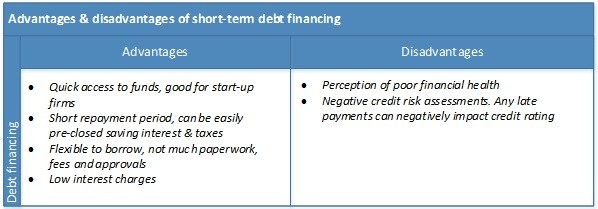Short Term Bond Funds The Pros and Cons
Post on: 16 Август, 2015 No Comment

Short Term Bond Funds: The Basics
While bond funds are often lumped together as a monolithic group in investment literature, there are in fact a wide variety of funds that can help investors meet a broad range of objectives. One of the most important goals of many bond-fund shareholders is safety of principal. If you count yourself among those who need to prioritize capital preservation, short-term bond funds may be right for you. Keep in mind, however, that these funds are unlikely to offer much in the way of yield.
What is a Short-Term Bond Fund?
A short-term bond fund is a fund that invests in bonds with maturities of less than five years. Any entity can issue short-term debt, including governments, corporations rated investment grade. and companies rated below investment grade .
Risk and Yield
Short-term bonds in this category tend to have lower interest rate risk than either intermediate- or long-term bonds, so they tend to hold up better when market conditions are unfavorable. Keep in mind, however, that you can lose principal in a short-term bond fund.
Here’s an example. In the second quarter of 2013, for instance, the bond market performed very poorly. During that time, Vanguard Short-Term Bond ETF (BSV) fell -0.77%, but it vastly outperformed the -4.11% return of Vanguard Intermediate-Term Bond ETF (BIV) and the -5.94% return of Vanguard Intermediate-Term Bond ETF (BLV). This helps illustrate that while short-term bonds fell, their losses were mild compared to other maturity segments. The flip side of this, of course, is that short-term bond funds don’t participate in bond-market upside to the same extent as longer-term funds.
Don’t forget that not all short-term bond funds are created equal. Some invest in securities with higher credit risk, such as high yield bonds, while others may seek to offset the low-yield environment by venturing into higher-risk securities. Before buying a fund, be sure to check its recent daily fluctuations relative to its peers. If the exhibits above-average volatility, that’s an indication that it may not offer the safety typically associated with short-term bond funds.
Another consideration is that these funds, by virtue of their location on the lower-risk end of the risk-and-return spectrum. offer low yields. (Keep in mind, risk and yield typically go hand-in-hand in the bond market). In many cases, the yields may not be sufficient to overcome the impact of inflation. However, low yields are the price that investors need to pay to achieve a greater degree of safety.
Short-Term Bond Funds vs. Money Market Funds
Short-term bonds are typically considered to be the next step up the risk spectrum from money market funds. Whereas short-term bond funds have modest share price fluctuation, money market funds maintain a stable, $1 share price. In exchange for the slightly higher risk, short-term bond funds offer higher yields than money market funds. For this reason, short-term funds can be an option for those with a slightly longer-time investment horizon (two to three years) that allows them to take on a modest degree of risk in exchange for a higher yield.
Reasons to Consider Short-Term Bond Funds
Short-term bond funds aren’t going to make anyone rich. However, they can serve several purposes:
- As noted above, they can act as an alternative to the various options that currently offer little to nothing in the way of yield.
- They can be used as a “parking place” for cash that won’t be needed for another two to three years.
- They offer investors who are concerned about a possible bear market in bonds with a way to stay invested in the bond market, but to do so with a lower degree of risk.
- Short-term bonds have a strong historical record of providing a better ratio of return in exchange for the attendant risks than longer-term bonds.
- They are less sensitive to rising inflation than intermediate- and long-term bonds.
- Short-term bond funds are highly liquid, meaning they offer investors easy access to their cash.

Short-Term Bond Funds: Historical Returns
As of August 31, 2013, the Morningstar Short-Term Bond category had one-, three-, five- and 10-year average annual returns of 0.32%, 1.73%, 3.18%, and 3.01%. Keep in mind, these returns are always changing. and they don’t tell us anything about future results. Still, this gives an idea of the relatively modest total return potential for this segment of the market.
How to Invest in Short-Term Bond Funds
Investors have countless investment options in this category. Morningstar divides the group into two categories, Short-Term Bond Funds and Short Government. The lists of funds in these two categories, along with their historical returns, can be found here and here without a subscription. Also, you can click here to see which funds in the category Morningstar ranks four and five stars.
In addition to mutual funds, investors can also purchase short-term bond exchange-traded funds, or ETFs. A full list of the ETFs available in this category can be found here .
The Bottom Line
Short-term bond funds are never going to provide big returns, but they can certainly serve a purpose for investors who need safety but who are looking for a way to earn yields higher than those available on ultra-low risk investments.
Disclaimer. The information on this site is provided for discussion purposes only, and should not be construed as investment advice. Under no circumstances does this information represent a recommendation to buy or sell securities. Always consult an investment advisor and tax professional before you invest.














